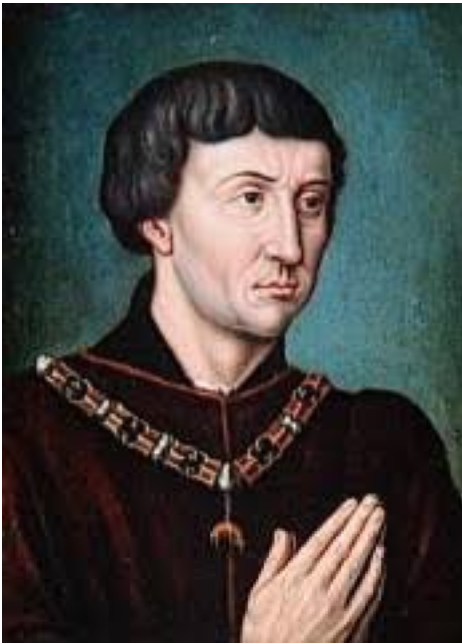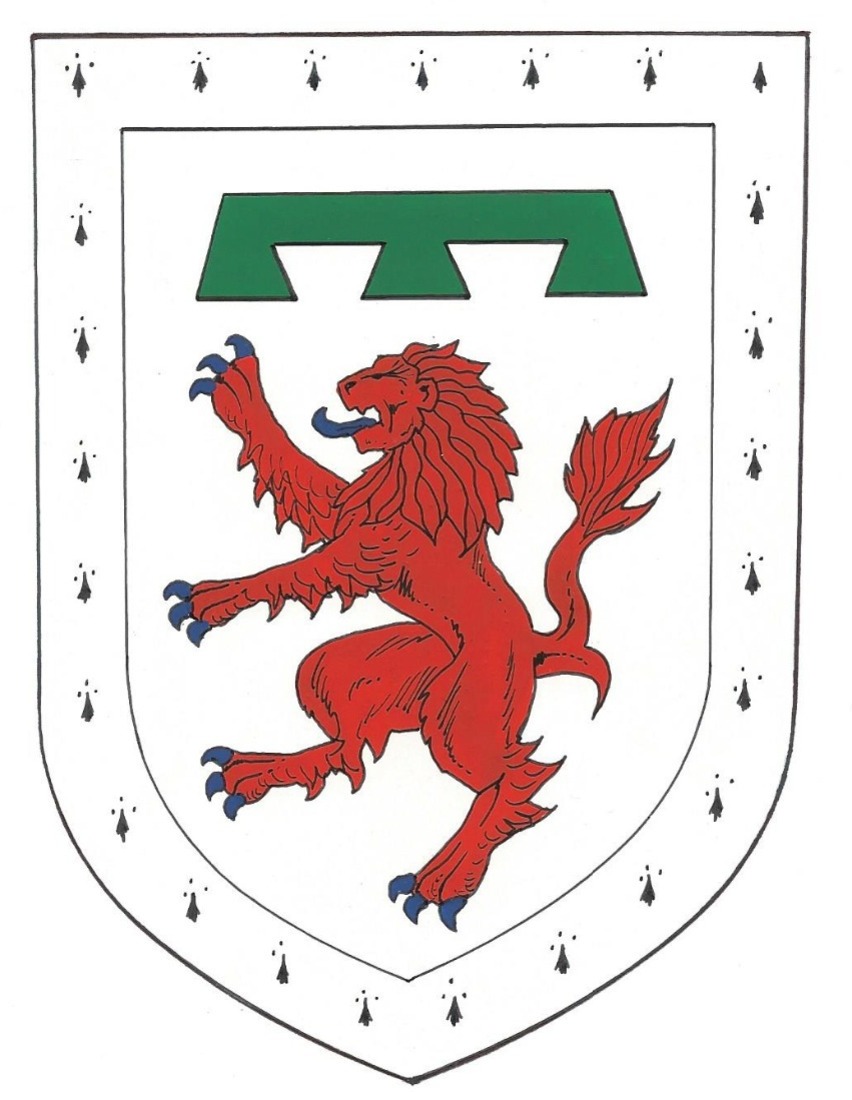Rene de Lorraine
Sovereign Grand Commander 1485-1508


Lorraine was a part of the kingdom of Lotharingia, a name given to the northern portion of lands assigned in 843 A.D. to the Emperor of the West, Lothair, in the first division of the Carolingian Empire. The name Lotharingia evolved over a time into Lorraine in French. This province became a duchy under the Holy Roman Empire and passed to the House of Alsace in 1048 which then became the House of Lorraine, who controlled this duchy until 1738.
René II, Count of Vaudemont, was born in Angers in France in 1451, the son of Yolande of Lorraine and Frederick Count of Vaudemont and spent his youth at Angers and Provence in the courts of his grandfather René of Anjou. There, as would be expected, he received a good education not only in humanism, but was also taught to speak Latin fluently; he also showed a strong interest in the arts, sciences and geography, he was later educated in Florence by Georges Antoine Vespucci, chief patron and sponsor of Botticelli. It was this René who united the two branches of the House of Lorraine. From his paternal grandmother Marie d'Harcourt he inherited the countships of Mayenne, Lillebonne, Brionne and other French fiefs, in addition to the honours of the elder branch, which included the countship of Guise. He also carried the title of Marquis of Pont-a-Mousson
René became Count of Vaudemont in 1470 on the death of his uncle John of Vaudemont (although later in 1495 exchanged it for Aumale) and Duke of Lorraine in 1473. Almost immediately the Duchy was caught in a power struggle between King Louis IX and Charles the Bold of Burgundy, the last reigning duke of Burgundy. Around this time Charles began to establish garrisons in the Duchy of Lorraine, and so for protection, René allied himself with the king. When in 1475 Charles invaded Lorraine, René was forced to leave Nancy and take refuge in Joinville, however he returned the following year with an army, which included Swiss mercenaries and others from Alsace, and with the help of Louis IX, who had signed a treaty with the Swiss, King Edward IV of England and Frederick III of Syria (de Habsburg), the coalition defeated Charles and his grandson. “Their army was cut to pieces and their artillery lost” at the battle of Nancy, in which Charles was killed. His mutilated body not being found until three days after the battle had ended. This defeat of Charles ended the Burgundian Wars. Following his victory René ordered the construction of the Basilica of St. Nicholas de Port and he rebuilt the Palais Ducal de Nancy.
In June 1478 Louis XI, transferred the rights to René and all of his descendants, the Duchy of Luxemburg and the County of Burgundy, although Burgundy was returned to the Habsburgs in 1493 under the Treaty of Senlis.
Rene’s military adventures continued after Nancy and encouraged by Louis XI of France, he added more territory at the expense of the Habsburgs by invading Luxemburg and seizing the Prevote of Virton and annexing it to the Duchy of Bar.
However René fell out with King Louis when in 1481, and Louis laid claim to most of the Duke of Lorraine’s lands, leaving him with only the Duchy of Bar and so in 1482 he moved to Italy as an ally and condottieri of the Republic of Venice and assisted in the defeat of Ercole I d`Este, Duke of Ferrara in the Battle of Adria, Ercole being the father of Isabelle d`Este whose son, Ferrante Gonzaga eventually became Sovereign Grand Commander of the Ordre du Lys. His son Alphonso married the infamous Lucrezia Borgia whilst another daughter, Beatrice married Ludovico Sforza, who was Sovereign Grand Commander of the Lys (1480-1485).
It was during the years of 1480-1493 (Whilst Sovereign Grand Commander), that René II also claimed the countship of Provence as Duke of Calabria (the Duke of Calabria was the traditional title of the heir apparent of the Kingdom of Naples).
In 1483, when his mother died, René succeeded as Duke of Bar and took up her claims to the kingdom of Naples and Jerusalem. In that same year on hearing the news of the death of Louis XI, he returned to Paris, where the regent gave René effective possession of the Duchy of Bar at the same time refusing his claim to Provence. However he later gained a number of sizeable districts through an uncle, who had become the Prince-Bishop of Metz. He inherited African lions from his grandfather’s menagerie in Aix-en-Provence, which he kept on display in a special menagerie at the ducal palace, where he had them displayed at occasional public spectacles in which they killed and ate wild bulls.
The year 1485 saw Rene engaged in fighting in the first phase of the “Mad War”*and in 1488 the Neapolitans offered him the crown of the Kingdom of Naples, but although he set out to claim this possession, he was halted by the new French King Charles VIII whom he had upset by attempting to kidnap the Ottoman prince Djem, who was being held in a remote castle in eastern France and also because of Charles’s intention to claim that realm for himself. At the time of this dispute, René had been receiving a pension of twenty thousand livres from the regent, but this was cancelled because of the above; his pension was finally restored in 1497. In 1495 he was involved in a dispute with his cousin Jean IV de Rieux over their grandmother’s inheritance and in order to resolve the situation amicably René agreed to swap the Duchy of Harcourt for that of Aumale.
René succeeded as Count of Guise in 1504 and in 1508 fell ill while hunting, dying in Fains –Veel (in the Haute Normandie region of northern France) in December of that year aged 57. His tomb is in the Church of Cordeliers in Nancy and in that same city, which until 1766 was the capital of the independent Duchy of Lorraine. In the Place Saint Epvre is an equestrian statue of him.
Married twice, Rene’s first wife was Jeanne d`Harcourt de Montgomery, Countess of Tancarville, daughter of René de Montgomery (Rene d`Anjou`s godson) and son of John Montgomery Constable of the Scots army to the King of France and one of the founding members of the Order. After the demise of Jeanne d`Harcourt, he married Phillipa of Guelders daughter of Adolf, Duke of Guelders and Count of Zutphen (her mother was Catherine of Bourbon) with whom he had twelve children, nine sons and three daughters.
He was succeeded as Duke of Lorraine by his third son Antoine (his two elder sons having died young) and of his remaining children his son John became the first Cardinal of Lorraine and Bishop of Metz while three others, Ferri, Louis and Francis fell fighting in French armies, at Marigano (1515), Naples (1526) and Pavia (1525) respectively.
In 1515 as Duke of Lorraine, Antoine married Renée of Bourbon daughter of Gilbert de Bourbon, Count of Montpensier by Clara Gonzaga and sister of Charles de Bourbon, Duke of Bourbon and so linked three families who at one time or another had members who became Sovereign Grand Commanders of the Order of the Fleur-de-Lys.
*The Mad War, also known as the War of the Public Weal was a war between a coalition of feudal lords, supported by the Kings of England, Spain and Austria against the French monarchy. Lasting three years it ended in victory for the French royalty with the principal outcome being the absorption of Brittany into the French kingdom.

























